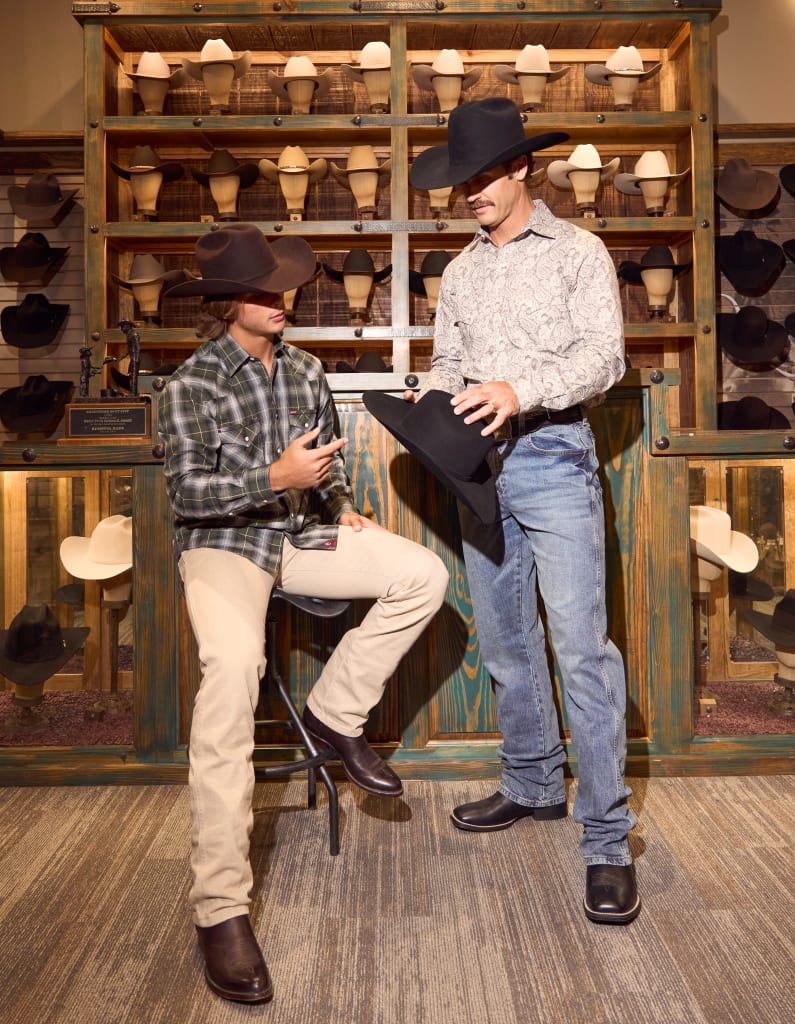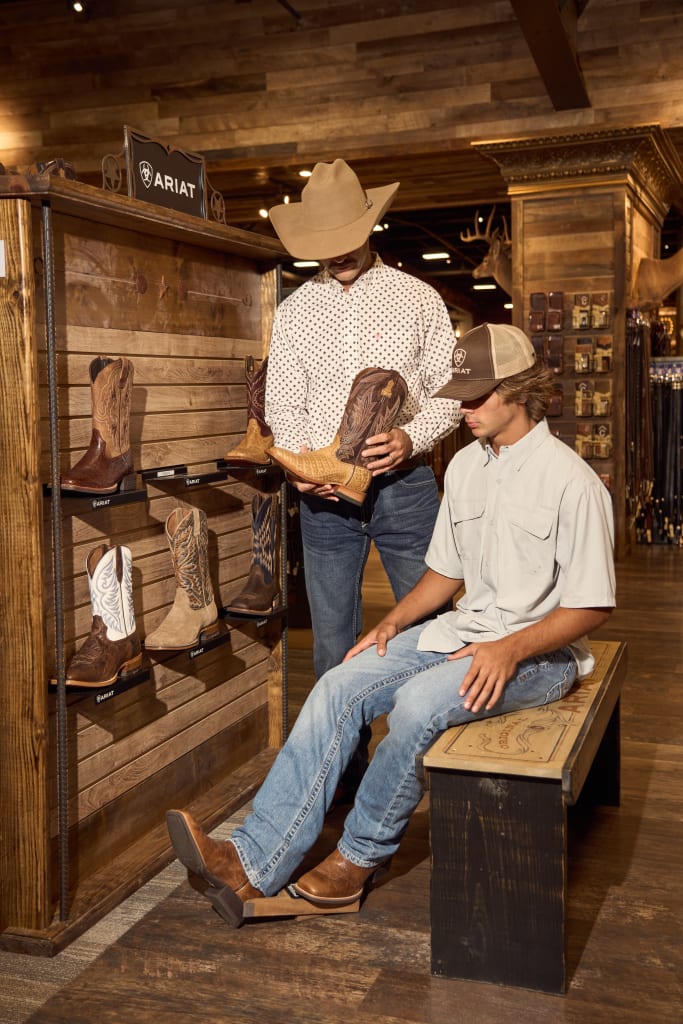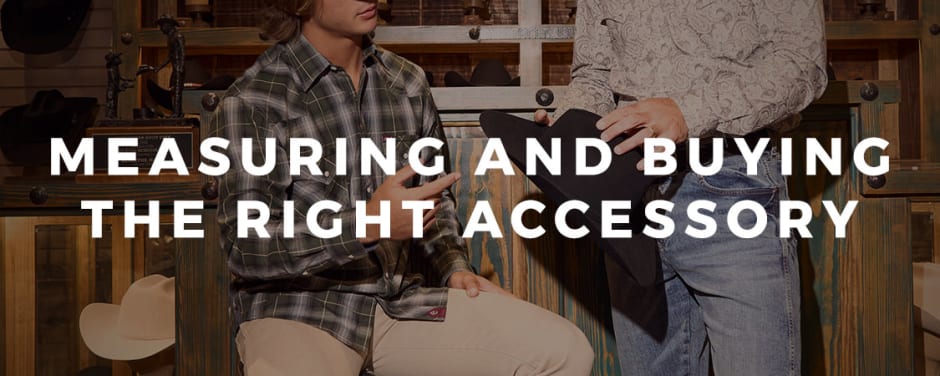Measuring and Buying the Right Accessory

When buying accessories like hats, belts, and boots, it’s important to make sure you get the best possible value for your money. This means finding items that are stylish, useful, and appropriately sized. If you accidentally choose something that doesn’t fit well, it may end up getting returned or collecting dust in your closet. Accessories that aren’t properly sized can also be uncomfortable to wear and even lose their functionality over time. Taking proper measurements before you buy accessories can help ensure that your clothing investments will last for years and will remain comfortable and practical for everyday wear.

Thankfully, it’s fairly easy to take measurements for most common types of accessories, though the exact steps will vary depending on what you’re shopping for.
Hats
Getting a hat properly sized helps ensure that it looks right and stays securely on your head. Finding the right size and style for your head is of utmost importance — as is finding the right hat shape, since that can also impact how a hat sits on your head. This is especially true for high-quality cowboy hats, which usually aren’t adjustable. On the other hand, ball caps are adjustable, while others have a flex-fit style that can fit the unique proportions of your head. There are three simple steps for measuring your hat size:
- First, take a 25-inch piece of string and wrap it around your forehead, about an inch above your ear, until the end of the string reaches the point where you started from.
- Then, mark both the starting point and the endpoint on the string.
- Finally, measure the length between the two previous measurements with a ruler. This measurement can then be used to determine your hat size.

You can also use a hat sizing chart to figure out your correct hat size. Men’s hats and women’s hats exist in separate categories, but both use the same style of measurement. Adult hat sizes range from a fitted 6¾ — the smallest size, which corresponds with a 21¼-inch head circumference — to the largest size, 8 — which corresponds with a 25-inch head circumference. Easy fit and sized stretch fit hats range from small to XXL. Children’s hat sizes typically range from 18½-inch circumferences to 22 inches.
Belts
Belts are available in a range of sizes, each tailored to accommodate different waist measurements, making it essential to select the correct size for practicality and comfort.
For Men’s Belts
The most accurate method to determine your belt size is by measuring a well-fitting belt you already own. Lay it flat and measure its length in inches, which directly corresponds to your belt size. For example, if it measures 34 inches, your belt size is 34.
If you don’t have a suitable belt for measurement, you can estimate your size by adding two inches to your regular waist size for pants. For instance, if you typically wear 34-inch waist pants, a size 36 belt should generally fit well.
Consulting a belt sizing chart can also provide a helpful overview of available size. Below is a belt size chart for men:
Men’s Belt Size Chart
- Small (S): 28-30 inches
- Medium (M): 32-34 inches
- Large (L): 36-38 inches
- Extra Large (XL): 40-42 inches
Most men’s belts feature five holes, and the measurement from the buckle side to the center hole corresponds to the belt size. Therefore, a size 34 belt measures 34 inches from the buckle to the center hole, with holes typically spaced 1-inch apart, covering sizes 32, 33, 34, 35, and 36 inches. Additionally, be aware that a western-style buckle may add an inch or two to the belt’s overall length.
For Women’s Belts
Ladies’ belts are predominantly alpha-sized, categorized as Small (S), Medium (M), Large (L), or Extra Large (XL).
It’s important to note that women’s belts are often designed with narrower widths for aesthetic purposes, while men’s belts are typically broader and more focused on functionality.
Boots
Many people depend on their boots daily, so it’s important to make sure they fit well. Measuring your size for cowboy boots and other types of tall boots is slightly more complicated than for traditional footwear. The first step is to sit in a chair and measure your foot for shoe size. Then, while still sitting in the chair with your legs bent at a 90-degree angle, measure the width of your calf at its widest point — which will determine circumference — and the length from the back of your knee to the floor — which will determine your calf height. You’ll also want to take into account your boot width before buying a pair. Boots come in six different widths: B, C, D, E, EE, and EEE. These correspond, respectively, with the extra narrow (B), narrow (C), regular (D), wide (E), extra wide (EE), and triple wide (EEE) sizes, ranging from 2.9 to 5.4 inches across. To ensure the best fit, you should add approximately half an inch to three-quarters of an inch to your calf height measurement to allow for drop, and wear your regular socks during the process to ensure their width is accounted for. Your cowboy boot size will include a combination of your traditional shoe size, denoted by a number, and your calf size, which can range from “short slim” to “tall regular.”

The shoe and calf sizes available to you may vary slightly by manufacturer. At legendary bootmaker Ariat, shoe sizes for men’s cowboy boots range from 7–15. Calf sizes range from 13 inches in circumference and 18 inches high (short slim), to 16.5 inches in circumference and 22.8 inches in height (tall regular). For women’s cowboy boots, the scale is slightly different. Shoe sizes for cowgirl boots range from 5.5 to 11, and calf sizes range from 12.5 inches in circumference and 16.5 inches in height (short slim), to 16.5 inches in circumference and 20.5 inches high (tall wide).
Ties & Bolo Ties
While it may not always seem necessary, accurately measuring your tie can help ensure that you look clean and professional for more formal events. Sizes for men’s ties are measured in length and width. Tie width is mainly a stylistic choice that depends on your desired look. The average width of a tie is about 3.25 inches. Narrower ties are considered modern and more casual, while wider ties are associated with a vintage look. Most ties are manufactured at a length of 57 inches, but your ideal tie length is related to your height and the type of knot you use, as more complex knots can shorten your tie more than anticipated. As a rule, you should make sure that the tip of your tie touches the very top of your belt when you are standing up straight. It is easier to adjust if you have more length rather than less. Find what look you are comfortable wearing. Another option that can be overlooked is the bolo tie. There are many options to choose from, but all reflect individual style. Classic bolo ties are braided leather with a slide that can hold many different accent choices. Traditional looks, such as conchos or oval stones are what first come to mind. Choices can also become an elaborate piece of unique silver, gold, copper, or stone jewelry that sits on the slide. They replace the need for a tie. A bolo tie is a great way to add that touch of western personality to your polished look. Paired with a dress shirt and vest, or Western shirt and jacket, a bolo tie can be that classy traditional look you want without the knot tying. Years and years of Cowboys can’t be wrong when it comes to simply looking good.
Jewelry
Wearing jewelry like bracelets, necklaces, and rings can be a great way to complement your clothes and further personalize your look. And there are jewelry options that can fit all budgets, styles, and dress codes. Western jewelry can provide a more rugged, classic look that’s ideal for outdoor events and other casual settings. This type of jewelry is more affordable and comes in a variety of different forms, including women’s Western rings that feature stones like turquoise and jasper, and Western-style necklaces that incorporate similar materials in a range of unique designs. You’ll want to consider the size of your jewelry so it fits correctly. For rings, you can wrap a string around your finger and mark the point where the circumference ends. Hold that up against a ruler, and then use an international ring size conversion chart to find your size. Whether you’re in the market for a new pair of boots or need a new belt, getting the measurements of your accessories right is just as much a matter of function as it is of comfort and style. Many of these pieces should be treated as a long term investment so it is worth the time to get just the right fit.

